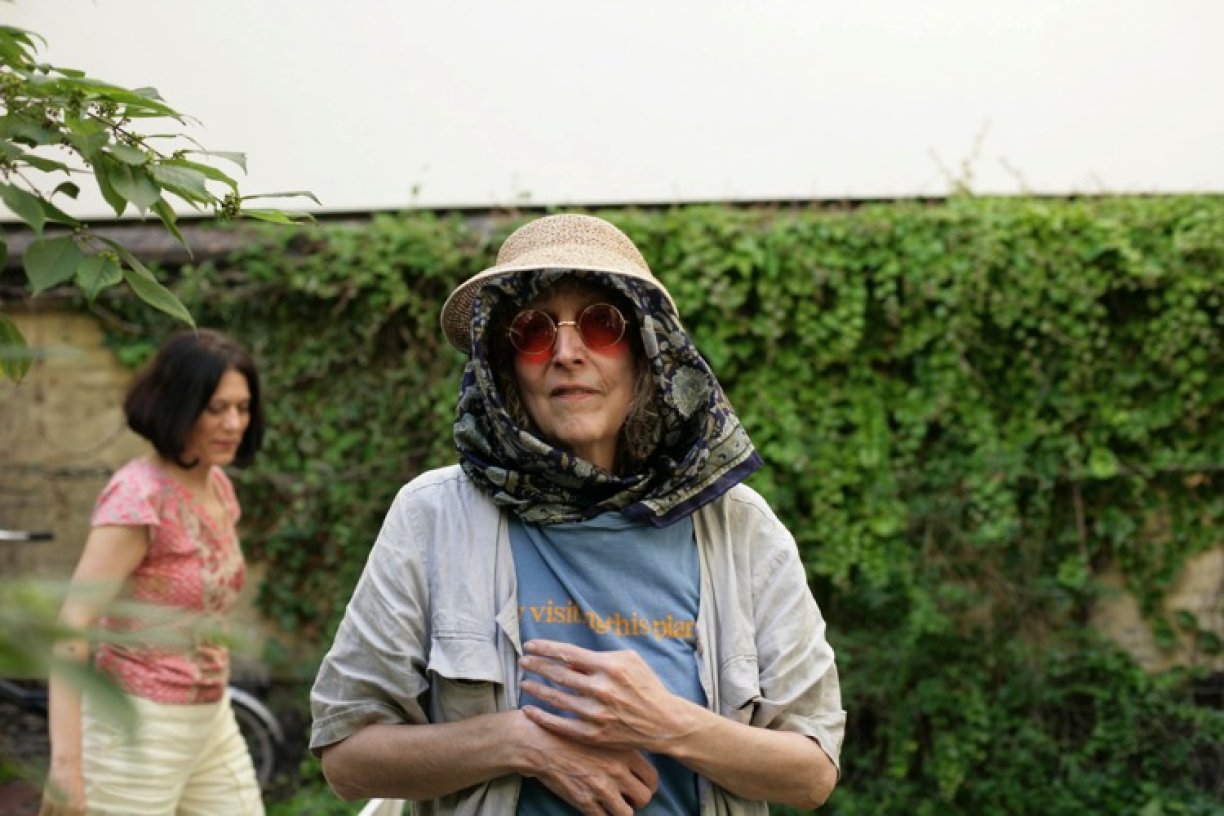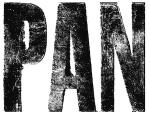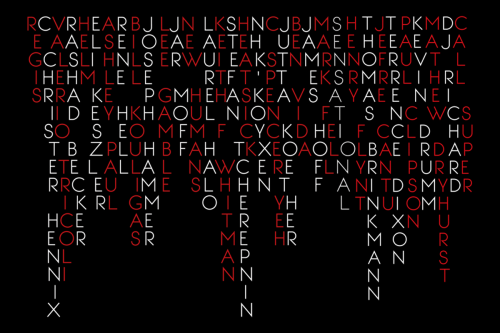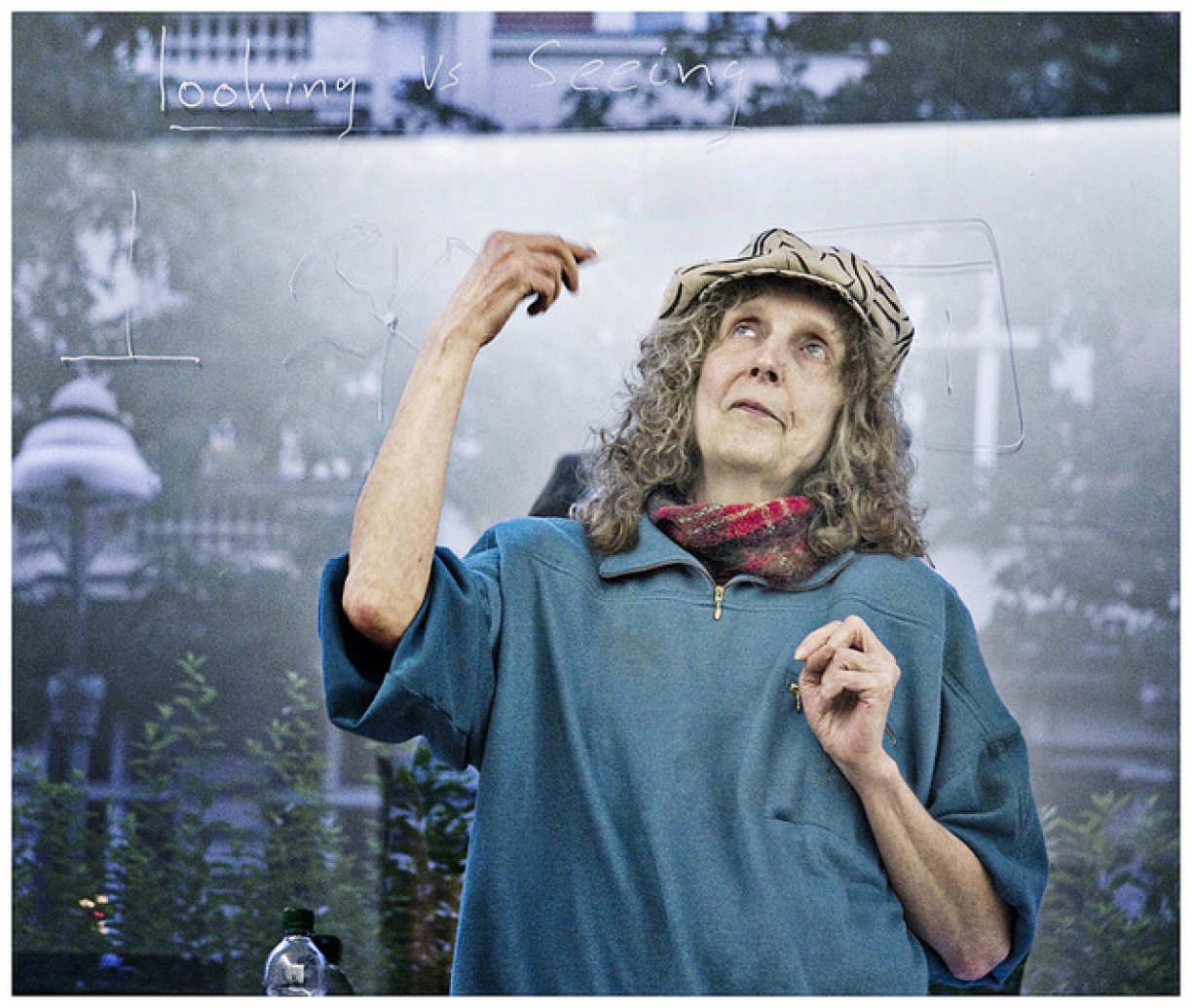As part of the June PAN_ACT festival, ISSUE Project Room and Goethe-Institut New York present a vocal performance by Catherine Christer Hennix with Virginia Tate (vocals), and Louise Landes Levi (sarangi), marking the close of her four-channel installation Rag Infinity/Rag Cosmosis. Her new, expanded realization of "Illuminatory Sound Environment", a concept developed in 1978 by anti-artist Henry Flynt on the basis of Hennix' work, was first realized in a "beta-version" for Flynt's 2012 retrospective at ZKM in Karlsruhe, Germany. Her first 4-channel computer assisted composition since 1969, the work is Hennix ́most complex composition since her recent return to the avant-garde music scene. This closing event is the last chance to see the work in its first fully realized version.
Rag Infinity/Rag Cosmosis is installed in ISSUE's 22 Boerum theater, free and open to the public, Saturday June 15th through Wednesday June 19th from 12-10pm.
Catherine Christer Hennix (C.C. Hennix) is a Berlin-based Swedish-American composer, philosopher, scientist, and visual artist associated with drone minimal music. Hennix was affiliated with MIT's AI Lab in the late 1970s and was later employed as research professor of mathematics at SUNY New Paltz. Hennix met La Monte Young and Hindustani raga master Pandit Pran Nath at the Nuits du Fondation Maeght festival in 1970 and pursued studies with both men during the 1970s.
In the '70s Hennix led the just intonation live-electronic ensembles Hilbert Hotel and The Deontic Miracle. In 1978 Henry Flynt formulated what, subsequently, became known as the concept of an Illuminatory Sound Environment (ISE) on the basis of Hennix' performance of The Electric Harpsichord at the Moderna Museet in Stockholm,1976. ISE was first realized in 1979 at the Kitchen, New York, as a joint manifestation by Flynt and Hennix. For the next 20 years Hennix devoted much of her time to mathematical research at the insistence of her late Nada Guru, Sri Faquir Pandit Pran Nath, serving as a professor of mathematics and computer science and assistant to and coauthor with A.S. Yessenin-Volpin for which she was given the Centenary Prize-fellow Award by the Clay Mathematics Institute, Cambridge, USA. In 2003 she returned to computer-generated composite sound wave forms now called Soliton(e)s of which Soliton(e) Star was the first result. Subsequently she formed the just intonation ensemble The Choras(s)an Time-Court Mirage which performs Blues Dhikir al- Salam.








